10 Best Parks in London
If you love green spaces, London is a destination to consider. Some of them are so dense and unusual that you might doubt you're even in London.
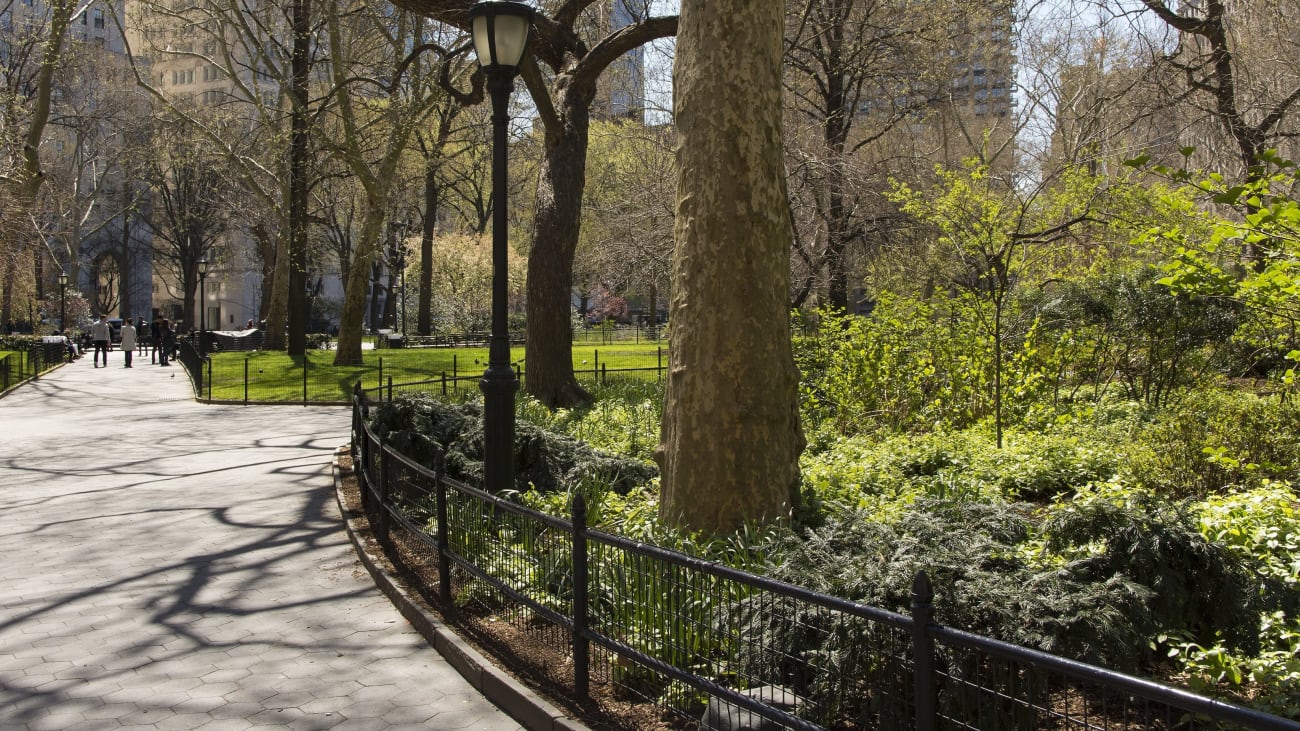
View of the Park | ©Pixabay
London is a green city, miraculously green. For every building, street and pavement there is roughly the same amount of green space, garden, park and field. If 8.4 million Londoners spontaneously decided to hug a tree, there would be a tree for everyone.
Such is the importance of green spaces in the city that getting to know them one by one is even general culture. In London, there are dozens of parks and, in this article, we will look at the 10 most important, or at least, from my point of view.
1. St John's Lodge Gardens in Regent's Park
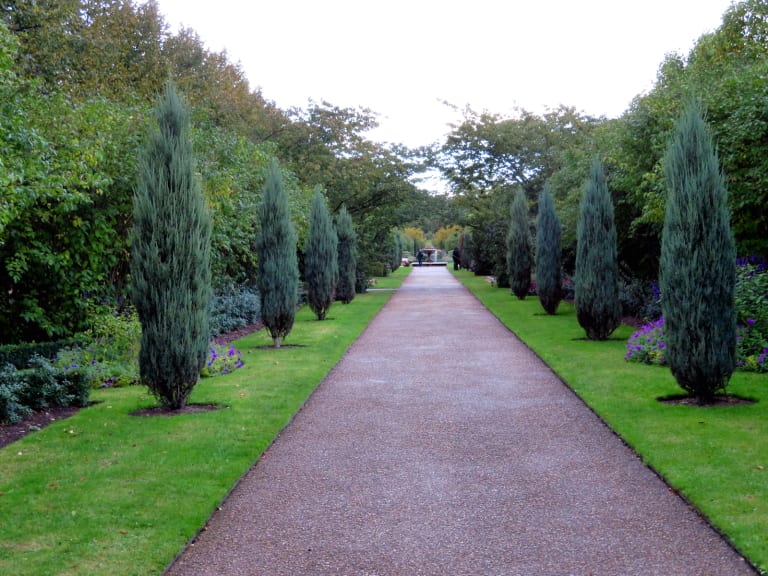
St John's Lodge Gardens is a space designed in 1888 as a place of meditation for one of the most influential marquises of the time (hence the name). The religious character of this green space gives it an air of intimacy, tranquillity and spirituality. Although this garden is part of a private residence, it is open to the public**(and without having to go through a cashier**).
This is undoubtedly one of the secret places in London that bewitches with its beauty, making us spend more time here than we expected. It also has religious statues, colourful flowers (especially violets and roses) and climbing plants that blend in perfectly with the structural elements, giving a complete and striking image.
The fact that it is a quiet park in terms of visitors means that you can walk through it from end to end and see every corner of it, even in springtime in London, a season when the city's parks are flooded with local and foreign visitors.
Its difficult location and private appearance make its nickname 'Jewel in the Crown' all the more meaningful. These gardens are in Regent's Park and are open daily from 5am to dusk.
2. Chiswick Gardens

Chiswick Gardens is arguably one of the most important cultural parks in England. Such is its importance that even The Beatles took advantage of its beauty to film and promote their early music albums.
This park was born in the 1720s, when the architect and designer William Kent materialised everything he said made him sleep deprived by giving us a natural beauty, also known as the English landscape park.
The appearance of the park is another of the points for which it stands out, it tries to flee from the formal, the artificial and leave a natural mark with lakes, classical temples and monuments in harmony with a lawn swept to perfection. What you may not know is that this format of park was a revolution in Europe, inspiring many others.
Also, if you go to London in winter, especially if you travel to London in January, and the bad weather catches you by surprise, you can take shelter in the park's conservatory. This houses an impressive collection of camellias, including one of two unique red Middlemist specimens.
3. Victoria Park
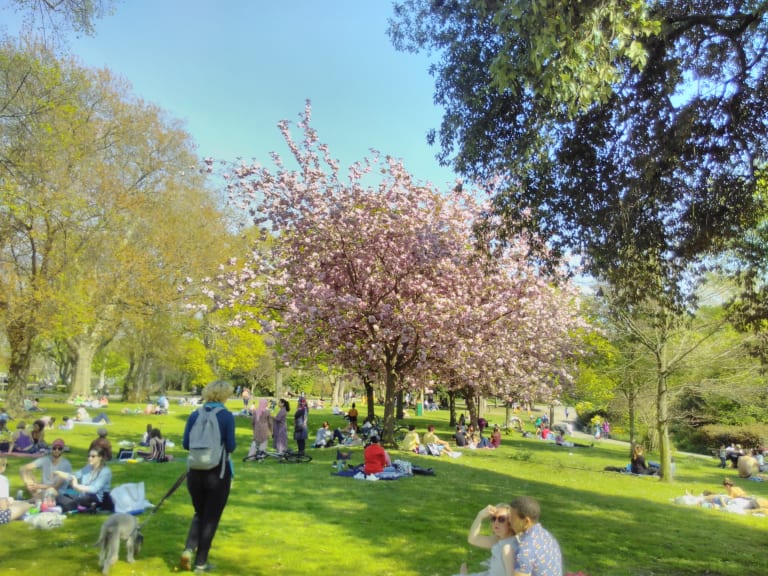
Victoria Park, located in East London since 1845, is one of the most popular parks in England. It is an area for all ages.
Victoria Park has a children's area with a playground full of slides, swinging equipment and even swimming pools for the summer. But there's also an 'adult side' with areas for world-class music festivals and two excellent cafés at either end of the park. If you go to London in March or London in April, you'll see the atmosphere.
It's not only a place for fun, but also for meditation and relaxation thanks to its lakes, gardens and beautiful pagoda. If you're in London for more than 5 days, I recommend you set aside at least one day to visit this beautiful park for a break. It's sure to be a great day out.
The park is open every day of the week from 7am. For more information have a look at the official website of the nature park.
4. Holland Park
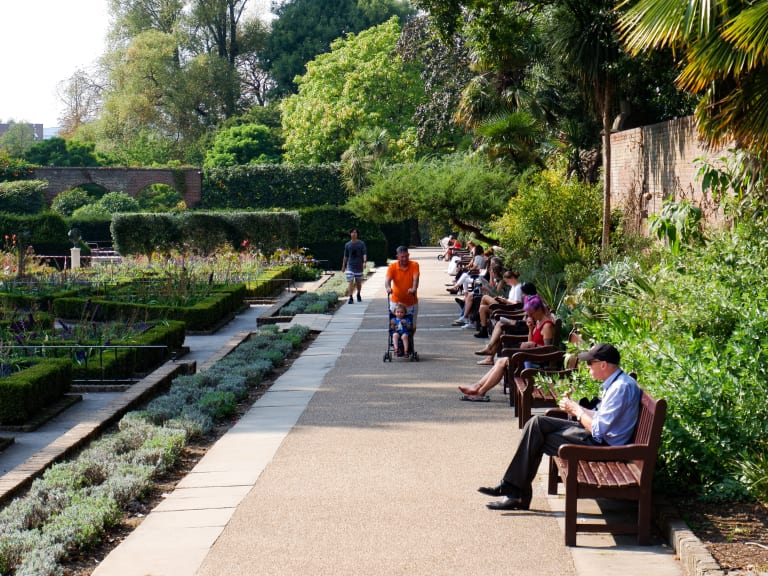
While London has many parks whose beauty attracts tourists and locals alike, Holland Park is one of those places that you should definitely include in your sightseeing tour, as it has several parts that will make your stay there last longer than planned. Holland Park includes a forest with native animals, especially peacocks with dense and extensive plumage.
There are also areas of spring greenery for relaxing and picnicking, one of the top things to do in London in spring. In addition, in the centre of the park is the Invectic Opera House, a roofless stage that hosts small concerts whose musical is not unnoticed in the area . And what better place for opera than surrounded by Mother Nature!
The southern part of the park is not fallow either, as it is often used for sporting activities, especially by children and teenagers.
Kyoto Garden
Despite its presence within Holland Park, it deserves special mention because of its peculiarity. It is a park that is perfectly in keeping with the Japanese style of gardening. It has a pond with a bridge and waterfall, multiple bonsais and flowers distributed left and right in order to give it an air of spirituality and calm. Undoubtedly one of the most visited areas in Holland Park.
The park is open daily from 07:30 in the morning, and closes half an hour before sunset. For more information visit the park's official website.
5. Osterley Park
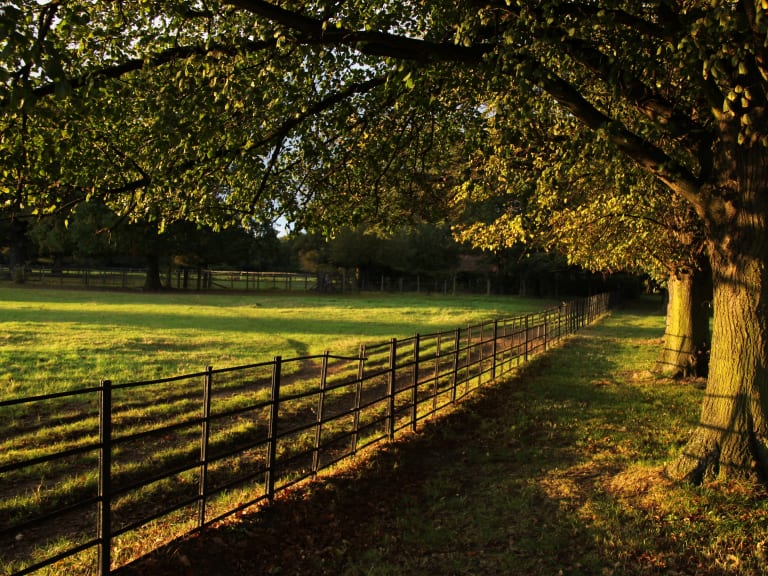
This ancient country estate seems to appreciate with the passage of time like a wine. Its appeal seems not to age, but on the contrary, to attract more and more visitors and onlookers. In its grounds is a grand mansion known as 'Osterley House' which served as a country retreat for wealthy families, hence its historical significance.
It is one of the largest open spaces in West London. Its lawns and gardens, towering oak, chestnut and cedar trees give the space a distinctive smell that contrasts with the pollution of the city centre. There is a cycle path around the park that makes it easy to see every corner of the park. (FYI, bikes can be hired on site).
The park is open from **7am until 7.**30pm. Entry is free for National Trust members only, and if you are interested in fishing at Osterley, please note that you can only fish in Middle Lake with a specially issued NT licence. Tickets can be purchased from either the kiosk at the entrance or from the official park website.
6. Richmond Park

Undoubtedly **London'**s largest nature reserve, red and fallow deer have roamed freely in the grasslands since 1637. Its stay away from roads and cycle paths gives it an even more natural feel - few places in London are as open as this.
However, if you're in London in summer, don't go here, as it's a nature reserve and you'll see nothing more than a pale, lifeless blanket, like an African sheet. However, if you go in spring, you'll see azaleas, camellias and brightly coloured flowers. A great way to connect with nature and disconnect from noise pollution, and people in general.
However, as with most London parks, the weather is a factor, especially in Richmond Park, where deer are the main attraction. London's autumns are also not exactly the best time to visit due to the heavy rain that falls from the sky, especially in October. For more information visit the park's official website.
7. Hampstead Heath
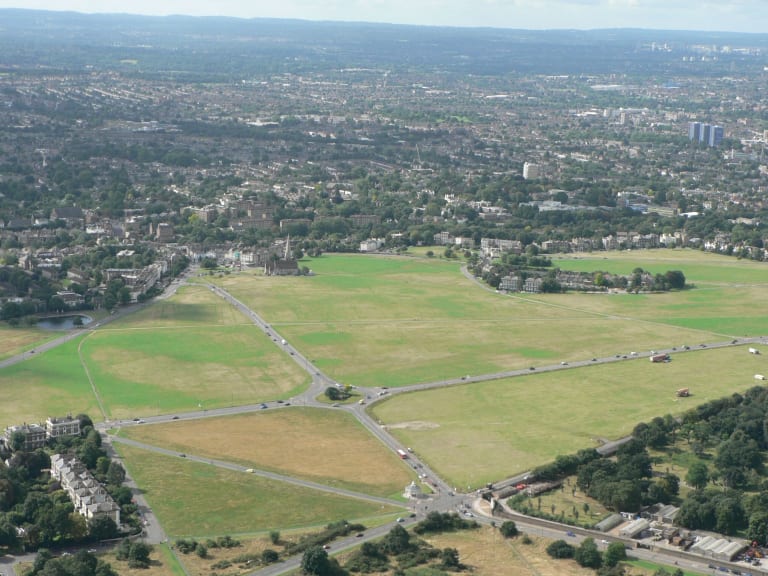
This ancient tract of land between Hampstead and Highgate is perhaps London's best-loved open space. Its rolling hills, meadows, glistening ponds and views evoke a deep sense of rurality that exists nowhere else in the city.
A summer picnic in the long grass, flying kites on Parliament Hill, sledging in the snow, taking a dip in the park's waters or walking in muddy boots are some of the most common activities Londoners engage in throughout the year.
In addition, the Heath's hilly geography and open expanses make it the ultimate snowy playground for any winter activity - you've got London plans for January! Visit the park's website for more information.
8. Crystal Palace Park
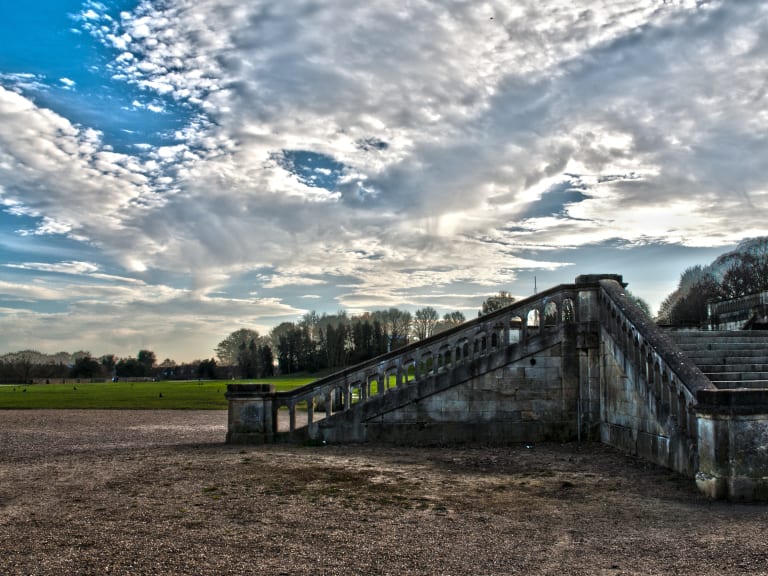
Crystal Palace is a huge park with a farm, a children's play area and a maze with zigzagging paths for adventure lovers, a sports centre and an athletics stadium. There are also Italian terraces, similar in style to Sir Joseph Paxton Park. And if that wasn't enough, there are also cafés and concert venues. One of the biggest attractions of the park are the dinosaur statues that still retain their shape today.
It is worth noting that if you are in London in December, you should take a stroll around the park as it hosts various musical and leisure activities, especially for young people and adults.
If you plan to go to London in February and celebrate Valentine's Day without spending so much money, I recommend you to come to the park with your partner as you can take a boat ride on one of the lakes. The views at sunset are beautiful!
The park is open from Monday to Friday from 7.30am.
9. Bonnington Square Garden
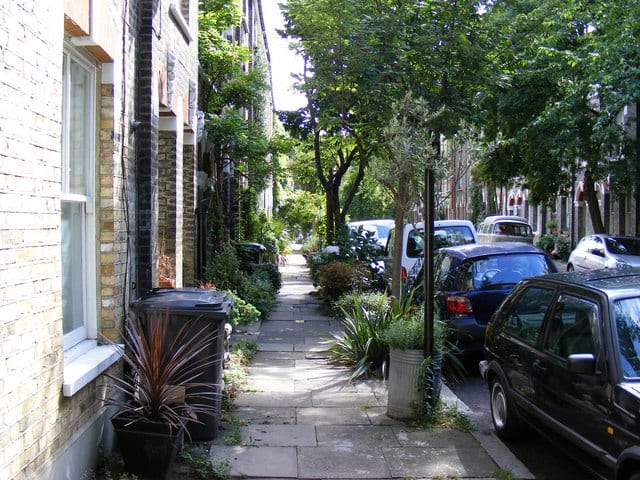
Bonnington Square Garden is a spacious green park with multiple labyrinth-like paths that spread out the grounds and enhance the feeling of being in a natural place away from the urban, yet still being in London.
In terms of vegetation, the park has climbers, flowering trees and palms that give the space a semi-tropical feel. Strolling around looking at palms, yuccas, banana plants and other exotic specimens gives an inevitable sense of escapism, as if you are literally in another part of the world, let alone London.
The park is open every day, from dawn to dusk. You know where to go if you get dizzy from the views from the London Eye and want to get some oxygen.
10. Hyde Park
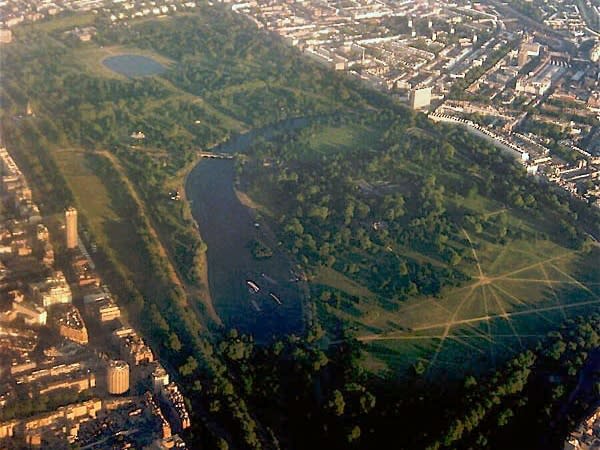
Hyde Park is the beating heart of London, a vast space that has always served as a place to express oneself, whether it be protest, demonstration or liberation. Hyde Park is the largest of the four royal parks that form a chain from Kensington Palace to Buckingham Palace.
Jogging, cycling, rollerblading, tai-chi, swimming in the Serpentine and picnicking are some of the most popular activities in this vast green space. What is most remarkable about this park is its spaciousness, allowing anyone to feel free in its bosom.
If you visit London in July or visit London in August you willsee that many rock concerts are held here; in fact, this site is a favourite of the legendary rock band: The Rolling Stones.
The park is open from 5am to midnight. If you want to know more about the site I recommend you to visit the official website of the Royal Parks.
